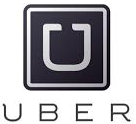Uber Launches New Strategy for Greater Accessibility, Amid Discrimination Lawsuits
Published: July 30, 2015 at 8:07AM

You may have read the Washington Post article last year when Uber was sued for discrimination against blind persons:
"The complaint filed in a Northern California District Court cites one instance where a California UberX driver put a service dog in the trunk and refused to pull over when the blind passenger realized where the animal was. On another occasion a passenger was trying to explain that his dog was not a pet but a service animal when the driver allegedly cursed at him and accelerated abruptly, nearly injuring the dog and striking the passenger’s friend, who is also blind, with an open car door."
And these weren't isolated events. Advocacy groups documented as many as 40 similar stories of discriminatory practices. According to a Consumerist report, Uber tried to dismiss the suit saying it isn't a public accommodation under the ADA since it's product is technology. But the judge rejected those arguments and Uber was forced to respond to the complaint. In April, Reuters reported the U.S. Magistrate Judge Nathanael Cousins in San Jose, California categorized Uber as a "travel service," making them potentially subject to the ADA.
And what about wheelchair, scooter, or other mobility-device users?
Just this month a Huffington Post report came out about the accessibility of New York City after 25 years of the ADA. James Weisman, executive vice president and general counsel of the United Spinal Association was quoted in the article detailing the city's problems, including Uber:
“Uber has not provided any accessible vehicles in any city,” he pointed out. “They’re leaving people with disabilities behind, and we can’t afford to let that happen. We can’t let them institutionalize a new inaccessible transportation system.”
So, with the rapidly-expanding company, is also a metastasizing problem.
But Uber is being responsive. A few days ago, Uber added a blog post, unveiling their strategy to provide "greater accessibility for riders and drivers" including solutions for people with a range of disabilities:
For Blind and Vision-Impaired Users — With VoiceOver iOS and wireless braille display compatibility, the Uber app provides a reliable transportation option for the blind and visually impaired community. Listen to Uber with VoiceOver iOS Podcast here from Mike May, CEO of Sendero Group and Technology Consultant to Uber.
For Deaf and Hard-of-Hearing Riders and Drivers — Uber has developed product innovations to make Uber’s economic opportunity easier to access for deaf and hard-of-hearing drivers. Visible and vibrating alerts also aid deaf and hard-of-hearing riders. In-app features such as the ability to enter a destination ensure effective communication between rider and driver.
UberASSIST — Driver-partners receive specialized training from disability community organizations to provide additional assistance for seniors and people with disabilities. Uber is piloting uberASSIST in Chicago, Houston, San Diego, Honolulu, Los Angeles, San Francisco, and Portland, Oregon, and rides are the same cost as regular uberX service. uberASSIST is also available in Australia in Sydney, Melbourne, Perth, Brisbane and Gold Coast.
Wheelchair Accessibility — All drivers on the Uber platform are able to accommodate folding wheelchairs. They have also partnered with wheelchair-accessible transportation providers in multiple pilot programs in New York, Philadelphia, Chicago, and San Diego.

User Comments/Questions
Add Comment/Question